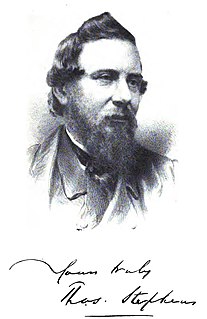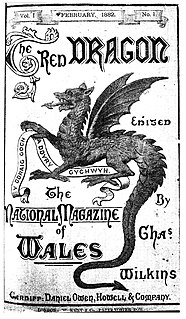
The National Library of Wales, Aberystwyth, is the national legal deposit library of Wales and is one of the Welsh Government sponsored bodies. It is the biggest library in Wales, holding over 6.5 million books and periodicals, and the largest collections of archives, portraits, maps and photographic images in Wales. The Library is also home to the national collection of Welsh manuscripts, the National Screen and Sound Archive of Wales, and the most comprehensive collection of paintings and topographical prints in Wales. As the primary research library and archive in Wales and one of the largest research libraries in the United Kingdom, the National Library is a member of Research Libraries UK (RLUK) and the Consortium of European Research Libraries (CERL).

The Cwrtmawr Manuscripts are a collection of 1,549 volumes of medieval Welsh documents, mainly texts of Welsh literature, collected by John Humphreys Davies, who lived at Cwrtmawr near Llangeitho in Ceredigion and was principal of the University College of Wales, Aberystwyth from 1919-1926. The manuscripts are now kept in the National Library of Wales.
This article is about the particular significance of the year 1983 to Wales and its people.
This article is about the particular significance of the year 1965 to Wales and its people.

Thomas Stephens was a Welsh historian, literary critic, and social reformer. His works include The Literature of the Kymry (1849,1876), Madoc: An Essay on the Discovery of America by Madoc ap Owen Gwynedd in the Twelfth Century (1858,1893), and Orgraff yr Iaith Gymraeg (1859), as well as a number of prize-winning essays presented at eisteddfodau between 1840 and 1858. He was the first Welsh historian and literary critic to employ rigorous scientific methods, and is considered to have done more to raise the standards of the National Eisteddfod than any other Welshman of his time. Stephens also figured prominently in efforts to implement social, educational and sanitary reforms both locally in Merthyr Tydfil and more broadly throughout Wales.
Emyr Humphreys was a Welsh novelist, poet, and author. His career spanned from the 1940s until his retirement in 2009. He published in both English and Welsh.
This article is about the particular significance of the year 1919 to Wales and its people.
This article is about the particular significance of the year 1914 to Wales and its people.
This article is about the particular significance of the year 1909 to Wales and its people.
This article is about the particular significance of the year 1843 to Wales and its people.
This article is about the particular significance of the year 1780 to Wales and its people.
This article is about the particular significance of the year 1779 to Wales and its people.

The Red Dragon, The National Magazine of Wales, was a monthly English-language literary magazine published in Cardiff, Wales, from February 1882 until June 1887. It was edited by Charles Wilkins until July 1885 when James Harris took over.

Blodau cerdd was a 19th-century monthly Welsh language periodical.

Greal y Corau was a 19th-century Welsh language periodical, first published for the Welsh Choral Union, by Thomas Gee, in Denbigh, in 1861. Its editors included journalist Lewis William Lewis and musician Edward Stephen. It contained articles about music and musicians, and music festivals. Many popular Welsh musicians and poets of the 19th Century, such as John Owen published regularly in this popular periodical.

The Greal (Llangollen) was a 19th-century Welsh-language periodical, first published by William Williams in Llangollen in 1852. Its editors included Baptist minister John Jones, minister Abel Jones Parry (1833-1911) and minister Owen Davies (1840-1929). Its articles were aimed at members of the Baptist Church congregations. Many popular Welsh musicians and poets of the 19th Century, such as John Owen published regularly in this popular periodical.

The Chepstow Gleaner was a 19th-century Welsh periodical, first produced by Clark and Son, Printers and Publishers, in Bank Square, Chepstow, Wales, in 1849. It contained articles on subjects of general interest, as well as extracts from published works and poetry.

Tarian Rhyddid a Dymchwelydd Gormes was a 19th-century Welsh language periodical, produced for the Congregationalist Church by ministers William Rees, one of the major Welsh literary figures of the 19th century, and Hugh Pugh (1803–1868). It contained mainly articles which attacked the Established Church, and protested against its practices.

Pryse's Cambrian Book Register was a 19th-century bilingual periodical, first produced by bookseller and printer John Pryse (1826-1883) in Llanidloes in 1857.
This article is about the particular significance of the year 1712 to Wales and its people.










